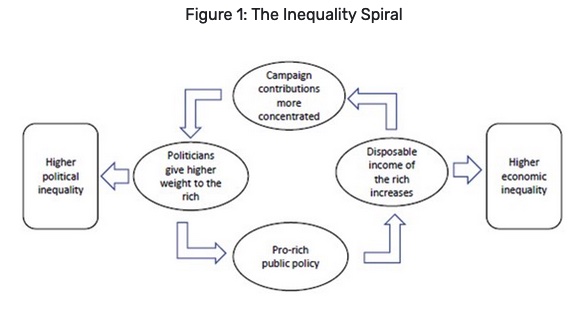Sky’s the Limit

A Norfolk beach on Friday afternoon.
Quote of the Day
”I do not have a psychiatrist and I do not want one, for the simple reason that if he listened to me long enough, he might become disturbed.”
- James Thurber
Musical alternative to the morning’s radio news
Grateful Dead | Ripple
Thanks to Doc Searls (Whom God Preserve) for the reminder.
Long Read of the Day
Public Intellectuals Have Short Shelf Lives—But Why?
An interesting essay by Tanner Greer, a chap hitherto unknown to me, but whose topic is fascinating — at least to me. I’ve been pondering the nature and life-cycles of so-called ‘public intellectuals’ (PIs) ever since I read Richard Posner’s famous book on the decline of the American PI as a species. And I even tried to do a map of the British equivalent, which got me into a deal of trouble, mostly because I gave the title to some individuals whom others detested!
Greer’s essay is not so much about “decline” but disappearance. It was triggered by a question someone asked on Twitter: “which public thinker did you idolize ten or fifteen years ago but have little intellectual respect for today? A surprising number of people responded with ‘all of them.'” These tweeters maintained that no one who was a prominent writer and thinker in the aughts has aged well through the 2010s.
Greer thinks that this historical fading is inevitable, and is not a special pathology of the 21st century.
When you read intellectuals of the 1910s talking about the most famous voices of the 1890s and early 1900s you get the same impression. You even get this feeling in a more diluted form when you look at the public writing of the Song Dynasty or Elizabethan England, though the sourcing is spottier and those eras and there was no ‘public’ in the modern sense for an individual living then to intellectualize to. But the general pattern is clear. Public intellectuals have a shelf life. They reign supreme in the public eye for about seven years or so. Most that loiter around longer reveal themselves oafish, old-fashioned, or ridiculous.
To give you a sense of what I mean by this, consider the career of public intellectual whose career peaked in the early aughts. Thomas Friedman is now the butt of a thousand jokes. He maintains his current position at the New York Times mostly through force of inertia, but secondly through his excellent connections within the Davos class and his sterling reputation among those who think as that class does. But this was not always so. Let us review Friedman’s climb to prominence…
Books, etc.
Noah Smith’s review of Power and Progress: Our 1000-year Struggle over Technology and Prosperity by Daren Acemoglu and Simon Johnson
This is possibly the most thorough book review I’ve ever read. I write with feeling on the matter, because I read and admired the book, and it’s salutary to read a dissection by a real expert. And the really nice thing about it is that Smith knows and admires the authors, so this isn’t a hatchet job.
He begins by wondering aloud about why such a monumental book seems to have made so little an impact. (He compares it in that respect with Pilketty’s Capital in the 21st Century).
But then he really gets going:
Power and Progress may have come out a little too late to make a big splash, and instead ended up just being one more voice shouting in the chorus.
On top of that, though, I have to say that this book…well, I just don’t think it’s very good. I winced while I wrote that sentence, because Simon Johnson is a personal friend, and Acemoglu is a celebrated genius, and because both of them have written such good books in the past. This is the first broadly negative book review I’ve written since 2014, and I’m a lot less combative of a blogger than I was a decade ago. I did not want to pan this book, especially because I think the topic is a good and important one, and I think the authors are brilliant people whose hearts are in the right place.
But I just don’t think the way this book was written ends up supporting the conclusions it draws. The historical examples it cites simply don’t support a narrative of out-of-touch technologists inventing the wrong sorts of technologies and hurting workers in the process. The book embraces a highly questionable definition of “power” in which persuasion in an open democratic society is painted as a threat. It often seems to assume its conclusions about the impacts of specific technologies, and it tells a jumbled and confusing story about the role of productivity growth. And its central claim — that society can push entrepreneurs to steer innovation in a direction that augments humans instead of replacing them — is not well-supported.
Read on. It’s a masterclass in reviewing.
OpenAI’s new video generation tool could learn a lot from babies
Yesterday’s Observer column:
Sora (the name is Japanese for “sky”) is not the first T2V tool, but it looks more sophisticated than earlier efforts like Meta’s Make-a-Video AI. It can turn a brief text description into a detailed, high-definition film clip up to a minute long. For example, the prompt “A cat waking up its sleeping owner, demanding breakfast. The owner tries to ignore the cat, but the cat tries new tactics, and finally, the owner pulls out his secret stash of treats from underneath the pillow to hold off the cat a little longer,” produces a slick video clip that would go viral on any social network.
Cute, eh? Well, up to a point. OpenAI seems uncharacteristically candid about the tool’s limitations. It may, for example, “struggle with accurately simulating the physics of a complex scene”.
That’s putting it mildly…
Linkblog
Something I noticed, while drinking from the Internet firehose.
Brent Simmons on falling out of love with Apple
I started using Apple computers — and writing code for them, starting with BASIC — 43 years ago, before the Macintosh, even, and I’ve made this my career. I’ve had all these decades to really, thoroughly delight in these incredible machines and software, and to give a little back with my own apps.
Apple’s positive effect on my life should not be underestimated. My Mom once (lovingly, teasingly) said to me that my alternate career, had all this never happened, was “criminal genius.” Which might have been fun too, but possibly more stressful than I might have liked. At any rate, Apple has saved me from a life of crime, and I should love Apple for that.
But I need to remember, now and again, that Apple is a corporation, and corporations aren’t people, and they can’t love you back. You wouldn’t love GE or Exxon or Comcast — and you shouldn’t love Apple. It’s not an exception to the rule: there are no exceptions.
Luckily, Apple has just provided us all with a reminder — its rules for in-app purchases in the US, Simmonds discovers, provide “a jarring, but not surprising, reminder that Apple is not a real person and not worthy of your love”.
Quite so. Repeat after me, all corporations are sociopathic — even though they’re run by humans. They’re what Charlie Stross calls “Slow AIs”, which is why it’s naive to ascribe their behaviour to the moral deficiencies of those who run them.
This Blog is also available as an email three days a week. If you think that might suit you better, why not subscribe? One email on Mondays, Wednesdays and Fridays delivered to your inbox at 6am UK time. It’s free, and you can always unsubscribe if you conclude your inbox is full enough already!
















